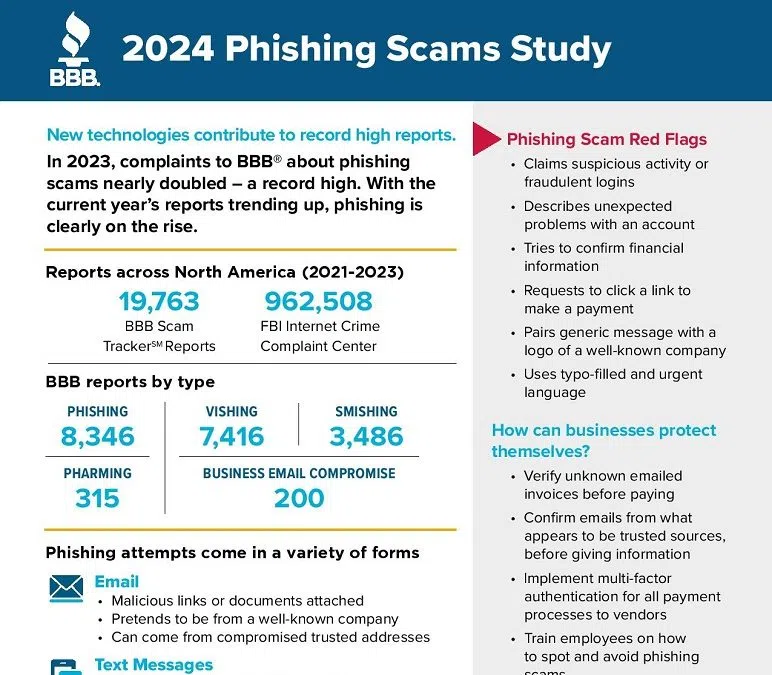Since 2021, reports to Better Business Bureau show that scammers use phishing tactics in nearly every type of scam, including government impersonation, tech support and cryptocurrency fraud. In more recent reports, they are increasingly turning to SMS-based versions of these scams, sending messages meant to trick the public into clicking on links that prompt them to share personal information or download malicious software.
In “BBB® Investigation: BBB tallies record number of reports as scammers adopt new technologies ” BBB examines patterns of reports, reviews the amount of money lost and shares stories from those caught up in the scams so the public can avoid them.
Key findings:
- Scam Tracker reports totaled over 9,000 in 2023, nearly double the previous year and a record high.
- Reports in 2024 indicate another record year is likely incoming.
- Phishing, despite being one of the oldest and most well-known scam techniques, continues to be successful, because of its adaptability to various forms of communication.
- Phishing scams target both individuals and businesses, with business losses totaling in the billions over the last three years, according to the Federal Bureau of Investigation and supported by BBB Scam Tracker reports.
- Because phishing techniques change so often, it can be hard for the public and authorities to keep up with the ever-changing defenses needed.
Statistics (reported to BBB from 2021-2023):
- Phishing (email) – 8,346
- Vishing (call and voicemail) – 7,416
- Smishing (SMS) – 3,486
- Pharming (malicious links) – 315
- Business Email Compromise – 200
Scam survivor story:
An Omaha woman parked at a metered spot and spotted a QR code nearby for payment. After entering her credit card details, she noticed the processing time was unusually long. Sensing something was amiss, she took photos of the QR code and the information displayed on her screen. It turned out the site was a scam designed to deceive hurried individuals. Though she managed to recover her money, she had to cancel her card to prevent ongoing charges from the scammers.
Red flags in phishing scams:
- Claims about suspicious activity or fraudulent logins
- Reaches out about unexpected problems with an account
- Tries to confirm financial information
- Requests to click a link to make a payment
- Offers government refunds
- Sends unasked for coupons
- Uses generic message paired with logo of a well-known company
- Speaks in typo-filled and urgent language
- Pretends to be a known authority figure requesting a business payment

